Literature Analysis: Using Mind Maps to Understand ‘O Captain! My Captain!
Literature holds a special place in the curriculum, offering students a window into diverse cultures, experiences, and perspectives. However, navigating the complexities of literary texts can sometimes be challenging for students. This is where mind maps come into play. By visually organizing key concepts, themes, and literary devices, mind maps provide students with a roadmap for understanding and interpreting texts more effectively.
Let’s see how we can use mind maps to explore Walt Whitman’s famous poem, “O Captain! My Captain!”
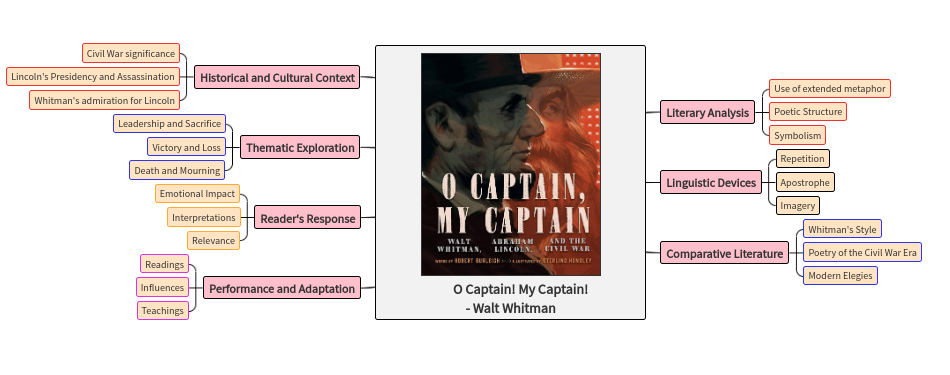
Table of contents
Introduction: How Mind Maps Can Help with Poetry
Understanding “O Captain! My Captain!”: Exploring Themes and Imagery
Creating a Poem Mind Map: Step-by-Step Guide with Lumos StepUp
Introduction: How Mind Maps Can Help with Poetry
The intricacies of poetry often pose a challenge for students. Here, we introduce a powerful ally: mind maps. By visually organizing themes, imagery, and literary devices, mind maps provide a roadmap for unlocking the meaning behind poetic verses.
Understanding “O Captain! My Captain!”: Exploring Themes and Imagery
Walt Whitman’s “O Captain! My Captain!” encapsulates the grief and reverence following the death of President Abraham Lincoln. As we delve into its verses, we encounter themes of mourning, patriotism, and the loss of a revered leader. Through vivid imagery and poignant metaphors, Whitman invites readers on a journey of reflection and homage.
Creating a Poem Mind Map: Step-by-Step Guide with Lumos StepUp
Accessing the Platform: Log in to your teacher portal Lumos StepUp account and select “My Mind Maps” from the dashboard.
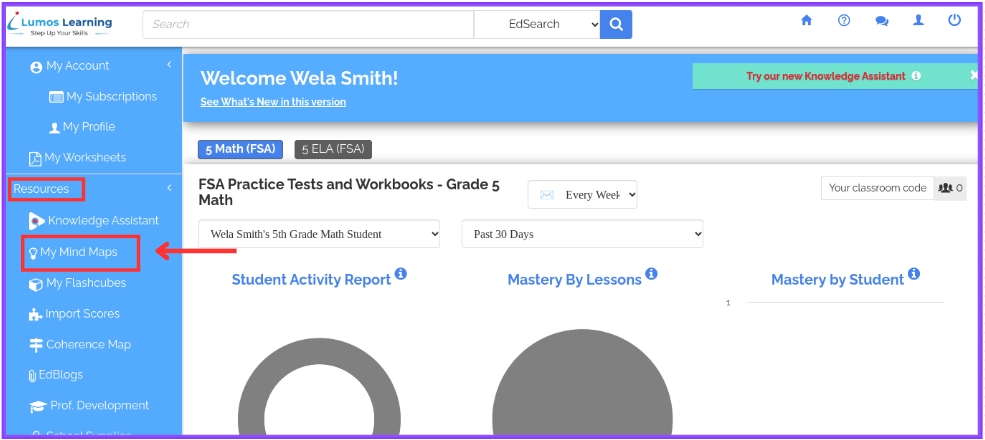
Creating a New Mind Map: Choose “Create New Mind Map” to initiate the mind map creation process.
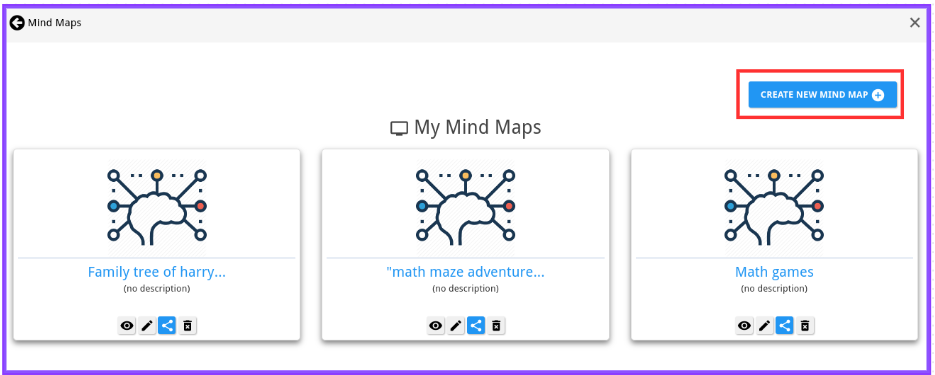
Using AI Autogeneration: Select “Create Using Own Text” and input the poem’s text. Click “Generate” to create an illustrated mind map. Allow the system a few moments to autogenerate a visual representation of the poem.
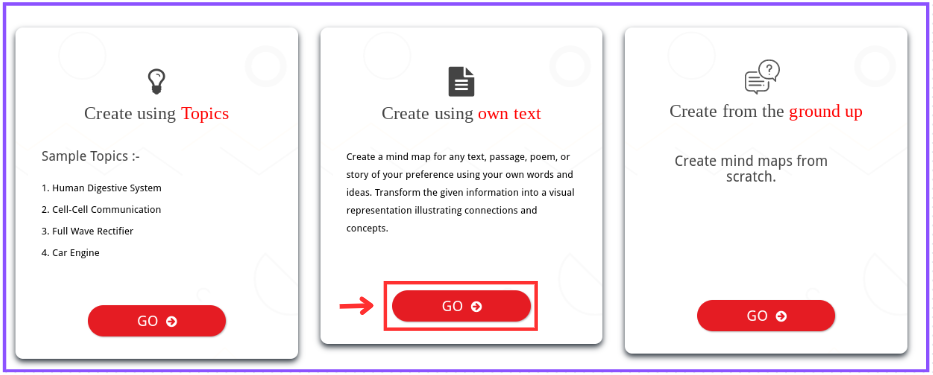
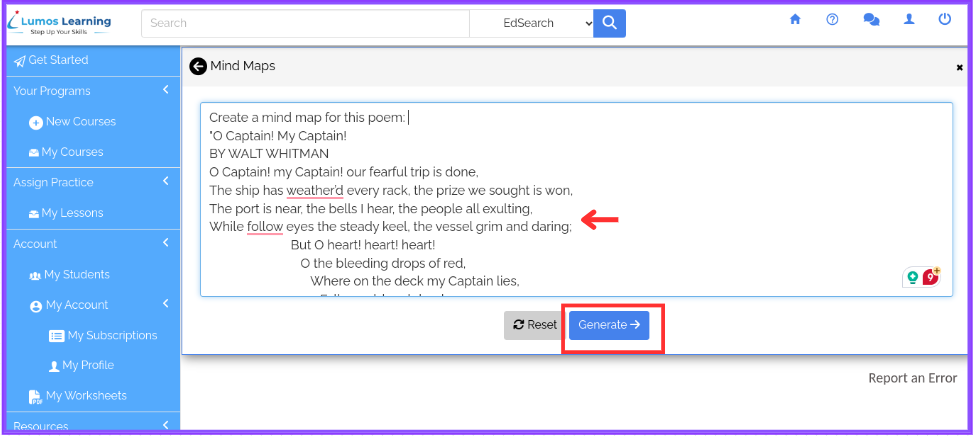
Exploring the Mind Map: Once generated, explore the mind map to see how Lumos StepUp has organized the themes, motifs, and literary devices present in the poem.
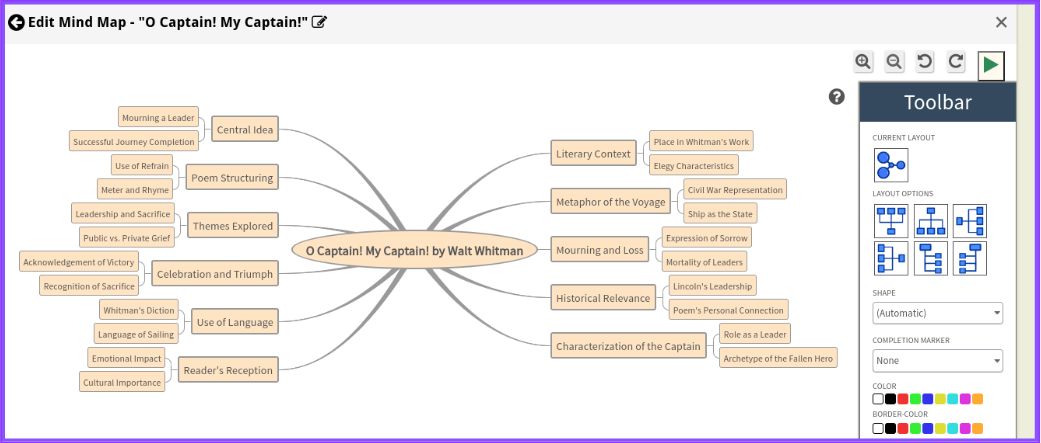
Customization: Personalize the mind map with colors, icons, and annotations to highlight key themes and imagery.
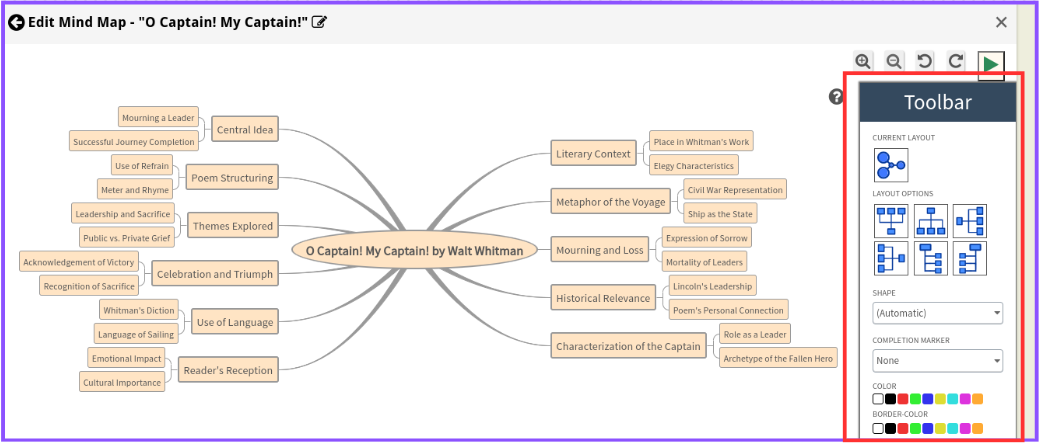
Consider including annotations or notes within the mind map to provide additional context or interpretations of specific lines or stanzas.
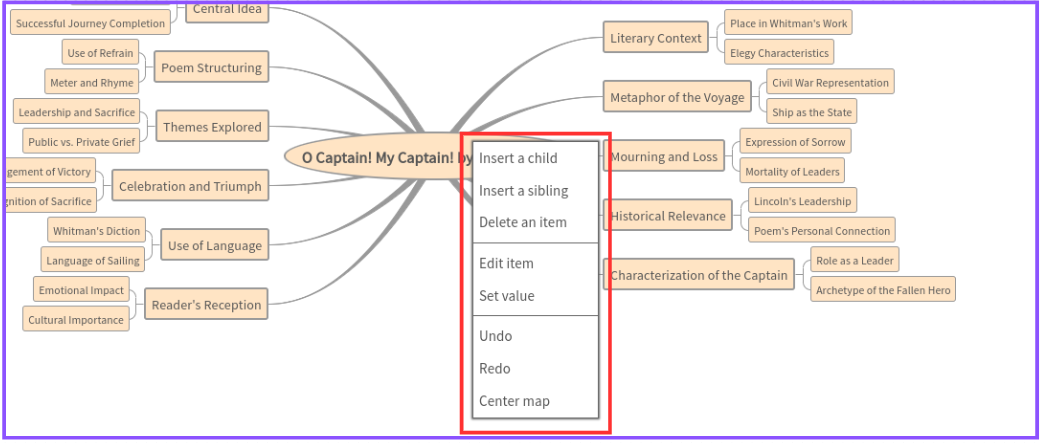
Encourage Students to Create Mind Maps
Once you have successfully generated your poem mind map, share it with your students to view/edit the mind-map and encourage them to create new mind maps on their own. You can do that as a classroom activity or can give it to them as homework assignment.
How to share mind maps:
Step 1: Click on the “Share” icon under your created mind map present on the “My Mind Maps” screen.
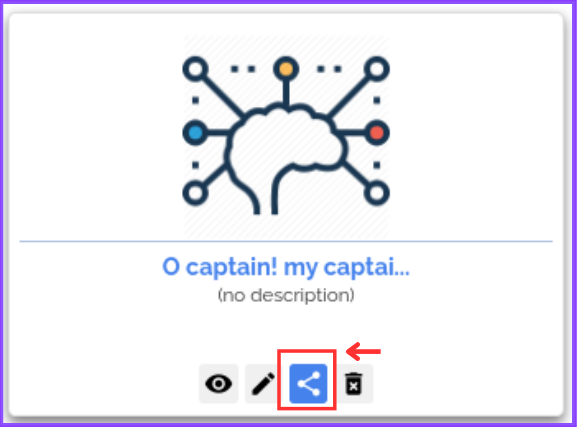
Step 2: Select the Student(s) list from the available options, then select the student(s) you want to share your mind map with and give them “View” or “Edit” permission access.
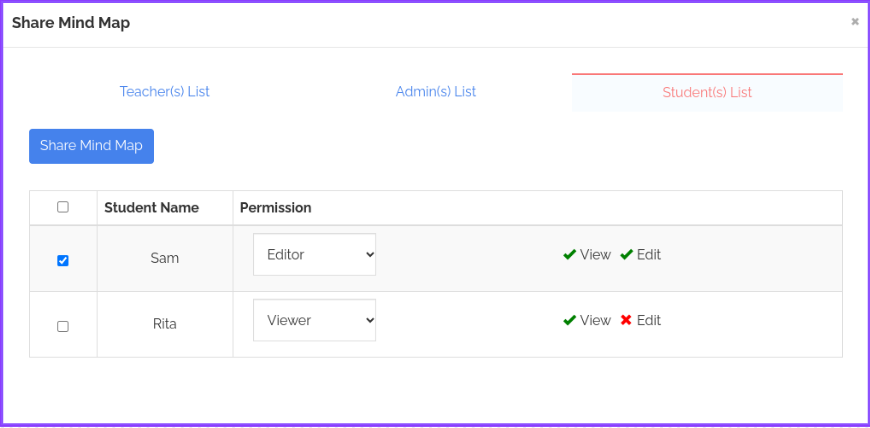
Step 3: The selected student(s) will then be able to view/edit the mind map based on the given permissions from their student accounts under the “Shared Mind Maps” section.

Using Poem Mind Maps in Class
Incorporating poem mind maps into classroom learning enriches students’ understanding and appreciation of literature:
- Introduction: Introduce mind mapping and its relevance to literature analysis.
- Exploration: Guide students in analyzing themes, imagery, and literary devices in the poem.
- Hands-on creation: Allow students to create their own poem mind maps, fostering creativity and critical thinking.
- Collaboration: Encourage peer sharing and discussion of mind maps to promote collaboration and deeper insights.
- Assessment: Use poem mind maps as assessment tools to evaluate students’ comprehension and interpretation of the poem.
Conclusion: Empowering Students Through Visual Literacy
By integrating mind maps into literature analysis, we empower students to engage with poetry in a meaningful and insightful way. Let’s continue to foster a culture of visual literacy and critical thinking, one mind map at a time.
